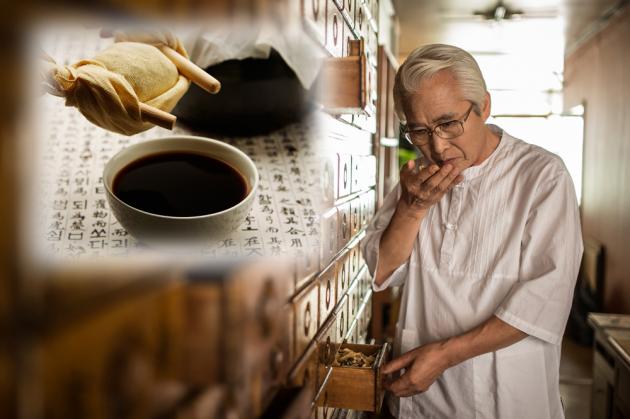The uncertain safety and efficacy of Oriental herbal medicines have long been an issue in Korea, as Oriental medicine practitioners tend to keep their recipes of herbal medicine as a secret.
Under the current law, an Oriental medicine practitioner is not obligated to issue a filling prescription which should include the names and doses of ingredients. When prescribing medicine with herbs, Oriental medicine practitioners do not have to conduct a clinical trial on the medicine as long as the components appear in hundreds of years old books about Oriental medicine such as Dongui Bogam, one of the classics of Oriental medicine.
That comes in stark contrast to the case of general medicine, which is allowed on the market only after its safety and efficacy are proven through toxicity tests and multi-phased clinical trials.
According to a survey on Oriental medicine practice and consumption of traditional herbal medicine in 2014, Korean people picked the safety of the herbal ingredients as the most urgent issue to tackle, followed by uncertain efficacy.

Due to the exemption of Oriental herbal medicine from mandatory clinical trials, its safety and efficacy have remained controversial.
In May 2016, three Oriental medicine practitioners were punished after selling fake herbal medicine disguised as anti-diabetes treatment. The three brought in unknown drug ingredients from China and mixed them with charcoal powder. They advertised the phony medicine as a “wonder drug” for diabetes and sold it at a price 24 times higher than anti-diabetes drugs prescribed by physicians.
A sizable number of Oriental medicine practitioners claim that they have secret ways of making herbal medicine to treat cancer, microcephaly or hydrocephalus. However, the health authorities do not have a system to verify what kind of ingredients they are using in Oriental herbal medicine and whether they are clinically effective.
At a parliamentary audit last month, lawmakers raised an issue with some Oriental doctors’ acupuncture using wild ginseng as an ingredient of herbal medicine to treat cancer. The price for “wild ginseng acupuncture” using 10 ml of herbal medicine is about 100,000-150,000 won ($89-$134) per session. However, it is unknown how the herbal medicine is composed of which ingredients and in what doses.
Rep. Park In-sook of the minor opposition Bareun Party pointed out the safety issue of wild ginseng acupuncture, showing the liquid samples of the herbal medicine at the parliamentary audit of the Ministry of Food and Drug Safety on Oct. 18.
“Oriental herbal medicine-related groups have different opinions about Saponins, presumably included in the liquid herbal medicine for wild ginseng acupuncture. While Korea Pharmacopuncture Institute says Saponins should not be included, the National Development Institute of Korean Medicine says the ingredient should be included. Oriental doctors didn’t even do a clinical test on the liquid medicine for wild ginseng acupuncture,” Park said.
She urged the food and drug safety ministry to investigate the safety of the herbal medicine thoroughly, as the Korean public recently raised concerns over foods and sanitary pads.
The Korean Medical Association also called for the government to work out a system to check the safety and efficacy of Oriental herbal medicine and acupuncture.
“The health authorities should objectively and scientifically verify safety and efficacy of Oriental herbal medicine, Oriental herbs and related ingredients, including those for wild ginseng acupuncture,” said Choo Moo-jin, president of the KMA, at a news conference at the KMA’s head office in Yongsan-gu, Seoul.
He demanded the government immediately revise the law and related regulations.
“The public and patients have the right to know what ingredients are included in the medication they take. The government should obligate Oriental medicine practitioners to issue filling prescriptions to display the names of the ingredients,” Choo said.
To tackle the safety issue, the Ministry of Health and Welfare announced a plan in December to build a public infrastructure to ensure the safety of Oriental herbal medicine. According to the plan, the government aims to check Oriental herbal medicine’s safety and efficacy just as other medicine and encourage their production at factories that abide by Good Manufacturing Practice GPM) in the long term.
Under the plan, the government will spend 30 billion won in the next three years on building a research center that will verify safety and efficacy of Oriental herbal medicine.

